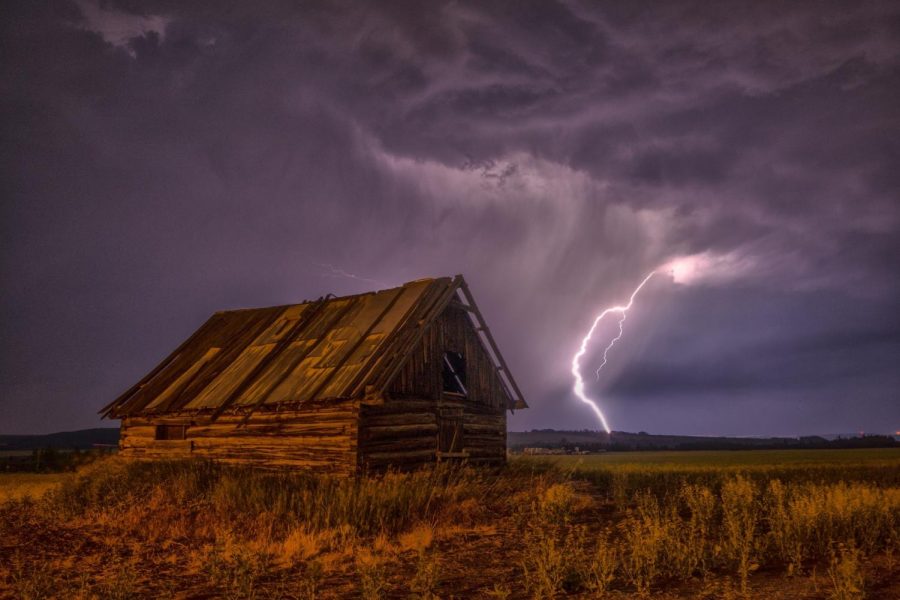‘Stranger Things’ Season 1: A Belated Review
Season Two of Matt and Ross Duffer’s Stranger Things, the eight-part Netflix series that garnered critical acclaim and godly status in pop culture upon its release in July 2016, is fast approaching.
For those of you who haven’t watched it and want to know what all the fuss is about, I decided to watch the first season again and give it a formal recap and review.
I won’t divulge any major spoilers because the gradual realization of what’s going on is so much fun, but here’s the gist of it: The year is 1983. The place is Hawkins, a small town in Indiana. A young boy named Will Byers disappears without a trace in the middle of the night. At the same time, a mute little girl with a buzz cut, clothed in a tattered hospital robe, pops up out of nowhere at a roadside burger joint (which is, fun fact, run by Toby from This Is Us).
It quickly becomes clear that something strange is going on, something unbefitting of a quiet town like Hawkins, and a roller coaster of suspense and excitement ensues.
Right off the bat, you know Stranger Things is going to be rooted in ’80s nostalgia. It opens with Will Byers and his nerdy, lovable friends playing a game of Dungeons and Dragons, making references galore to Star Wars and other ’80s pop-culture staples.
They proceed to ride their bikes home, yelling at and jesting with each other. One can’t help but think of Steven Spielberg’s ET: The Extra-Terrestrial.
But Stranger Things’s ‘80s roots extend far beyond appeasing references. Its characters, story, and overall tone recall what made the films of that decade so timeless; just like ET, Indiana Jones, Star Wars, and other unforgettable masterpieces, it has just the right mix of terror, excitement, romance, drama, and humor to draw you in and keep you teetering at the edge of your seat.
Despite that healthy mix, I would say Stranger Things is primarily a thriller. There are some genuine scares—it does a terrific job of giving you “that sinking feeling.” That’s not to say it’s an outright horror story, but if you’re not big into the horror/thriller genre, Stranger Things might not be for you.
If you do enjoy those nail-biting moments, it makes the show that much more engaging. To build the suspense, the Duffer brothers shroud the protagonists’ supernatural foe in shadow and mystery until just before the very end. When its true form is finally revealed, the design is suitably menacing.
Better than the suspense, however, and perhaps more important to the show’s success overall, is the cast of complex and sympathetic characters. There’s a reason Millie Bobbie Brown has risen to superstardom and even the supporting actors are now instantly recognizable; their characters make you root for them—no, cheer for them.
Brown plays Eleven, the aforementioned mute girl and I won’t reveal exactly what I mean, in a performance that elicits both gasps and tears. Finn Wolfhard, who went on to star in Steven King’s It earlier this year, is charming as the de facto leader of the boy band, and Gaten Matarazzo provides a welcome dose of humor as curly-haired, “toothless” Dustin.
One character unfortunately left in the dust is Stranger Things’s lone African-American actor, Caleb McLaughlin, who is given neither a prominent enough role nor a distinctive enough personality to shine. Racial diversity is something the creators need to work on.
The show’s adult stars are also phenomenal. Winona Ryder plays Will’s mom, Joyce, whose unwavering commitment to finding her son despite drawing the ire of her friends, family, ex-husband, and the depressed police chief Jim Hopper (David Harbour), who has a great progression from slovenly drunkard to determined hero.
Not many TV shows’ visuals are impressive enough to warrant comment, but Stranger Things is an exception. The opening credits sequence is particularly noteworthy; satisfyingly simple, the cast and crew appear among quivering red letters that slowly come together to form the title.
The music, a clear callback to the synth-heavy scores that defined ‘80s cinema more than anything else, reinforces the tone of suspense that persists throughout the entire show.
Technically, the show is incredibly well-made. The cinematography is sharp, smooth, and not at all hard to look at. It doesn’t seem massively important at first glance, but it does make Stranger Things even more entrancing and further showcases the Duffer brothers’ unfailing attention to detail.
What really shines about Stranger Things is the fact that its greatness is not the result of any one virtue. All these elements are expertly crafted, not just a few.
From the detailed ‘80s atmosphere to the nail-biting suspense to the captivating characters to the subtly beautiful cinematography, all its meticulously constructed components come together to form a symphony of perfection, rather than a solo.
If you’re looking for a show to binge-watch (after homework, of course) this is the one. It’ll suck you in and won’t let go.
Stranger Things Season Two is out on Netflix Friday, October 27th.
For this and more great articles by columnist Duncan O. Glew, visit his blog, State of the Glewnion: A Political Journal by Duncan Glew.


